The Ultimate Guide to Finger Millet Microwave Drying and Sterilization Machine in 2024
Introduction
In 2024, the realm of food processing has witnessed a revolutionary advancement with the introduction of the finger millet Microwave Drying and Sterilization Machine. This cutting-edge technology represents a significant leap forward in the preservation and processing of finger millet, a highly nutritious grain with immense potential for global food security.
Microwave technology has long been recognized for its efficiency and precision in various industries, and its application in food processing has garnered increasing attention in recent years. With the finger millet Microwave Drying and Sterilization Machine, manufacturers and processors now have a powerful tool at their disposal to elevate the quality and safety standards of finger millet products.
This ultimate guide aims to delve into the intricacies of finger millet Microwave Drying and Sterilization Machines, offering insights into their functionalities, benefits, applications, and future prospects. By understanding the capabilities of this advanced equipment, stakeholders can unlock new opportunities for innovation and growth in the finger millet processing industry.
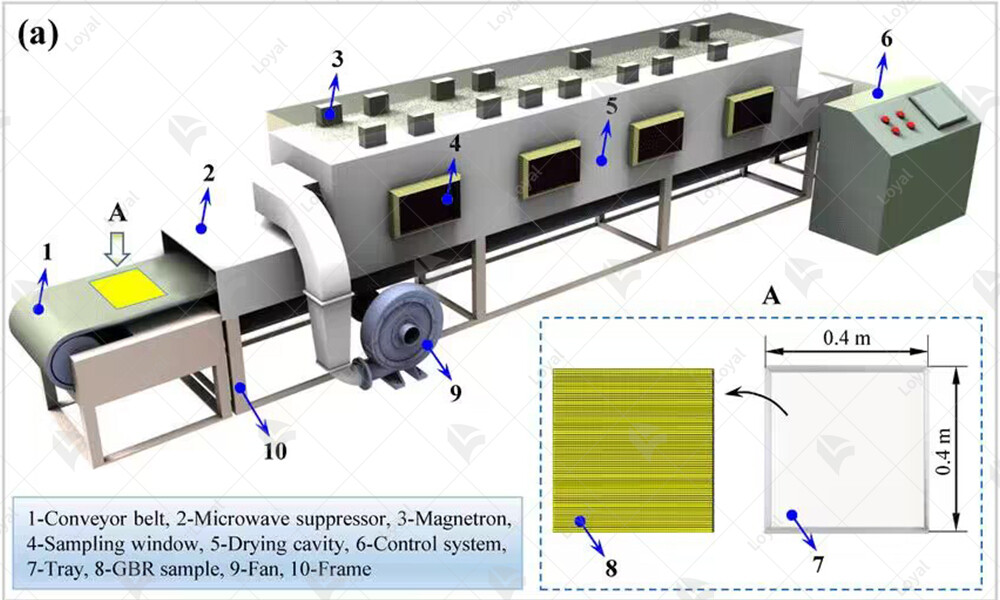
Working Principle
The finger millet Microwave Drying and Sterilization Machine operates on the principle of utilizing microwave energy to remove moisture and eliminate harmful microorganisms from finger millet grains. This innovative technology harnesses electromagnetic waves to penetrate the grains, causing the water molecules to vibrate rapidly. As a result, the generated heat effectively dries the finger millet while simultaneously sterilizing it, ensuring the safety and quality of the final product. By leveraging this efficient and chemical-free process, the machine facilitates rapid drying and sterilization of finger millet grains, optimizing productivity and enhancing food safety standards in the processing industry.
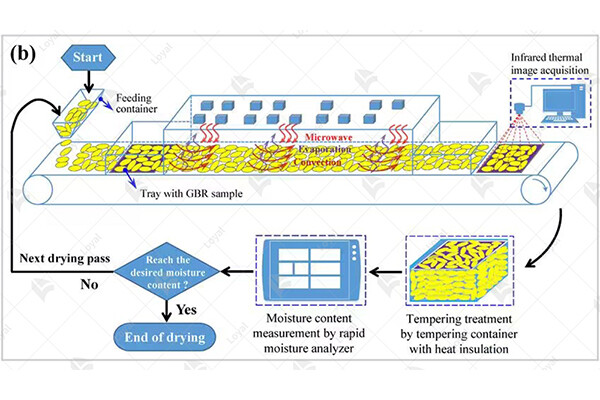
Advantages of industrial microwave ovens
1. Rapid Processing |
- Industrial microwave ovens offer rapid drying and sterilization of finger millet, significantly reducing processing time compared to traditional methods. |
2. Energy Efficiency |
- Microwave technology utilizes energy more efficiently than conventional drying methods, resulting in lower energy costs and environmental impact. |
3. Nutritional Preservation |
- Unlike conventional methods that may degrade nutritional content, microwave drying and sterilization machines preserve the natural nutrients of finger millet, ensuring a healthier end product. |
4. Improved Product Quality |
- Microwave technology allows for precise control over temperature and moisture levels, resulting in higher quality finger millet with better texture, flavor, and appearance. |
5. Versatility |
- Industrial microwave ovens are versatile machines capable of processing a wide range of food products, making them a valuable asset for food processing facilities handling diverse products. |
6. Reduced Labor Requirements |
- Automation features in industrial microwave ovens streamline the processing workflow, reducing the need for manual labor and improving overall efficiency. |
7. Space Saving Design |
- Compact and space-saving designs of industrial microwave ovens optimize floor space in food processing facilities, allowing for efficient utilization of available space. |
8. Consistent Results |
- Microwave technology provides consistent and uniform drying and sterilization results across batches, ensuring product consistency and reliability. |
9. Reduced Microbial Contamination |
- The rapid and efficient sterilization process of industrial microwave ovens helps reduce microbial contamination, enhancing food safety and shelf life. |
10. Cost-Effectiveness |
- Despite initial investment costs, industrial microwave ovens offer long-term cost-effectiveness through energy savings, reduced labor costs, and improved product quality. |
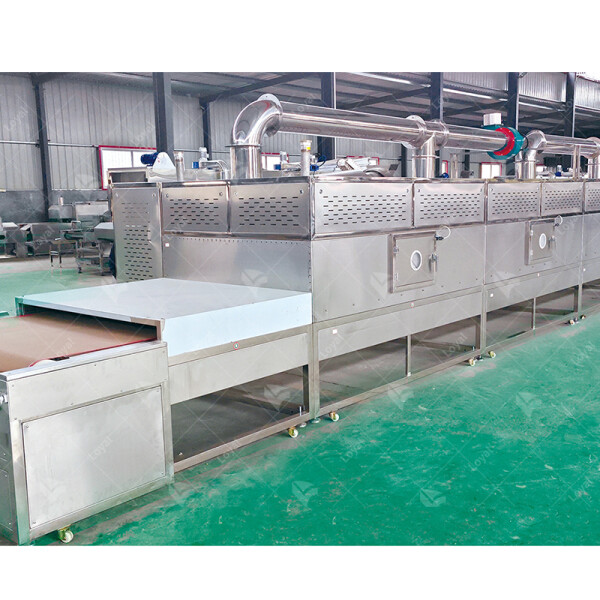
Key components of Finger Millet Microwave Drying and Sterilization Machine
Key Component | Description |
Microwave Chamber | A spacious chamber designed to accommodate a large quantity of finger millet for processing. |
Magnetron | The core component that generates microwave energy for the drying and sterilization process. |
Rotating Turntable | Ensures uniform distribution of microwave energy throughout the chamber for efficient processing. |
Temperature Control System | Regulates the internal temperature of the chamber to optimize drying and sterilization conditions. |
Humidity Sensor | Monitors the moisture content within the chamber, allowing for precise control of the drying process. |
Safety Interlock System | Ensures operator safety by automatically shutting off the machine if safety protocols are breached. |
Control Panel | Interface for operators to set parameters such as time, temperature, and drying mode. |
Air Circulation System | Facilitates proper air circulation within the chamber, enhancing the drying and sterilization efficiency. |
Exhaust System | Removes excess moisture and gases from the chamber to maintain optimal processing conditions. |
Cooling System | Prevents overheating of the machine components and ensures longevity of the equipment. |
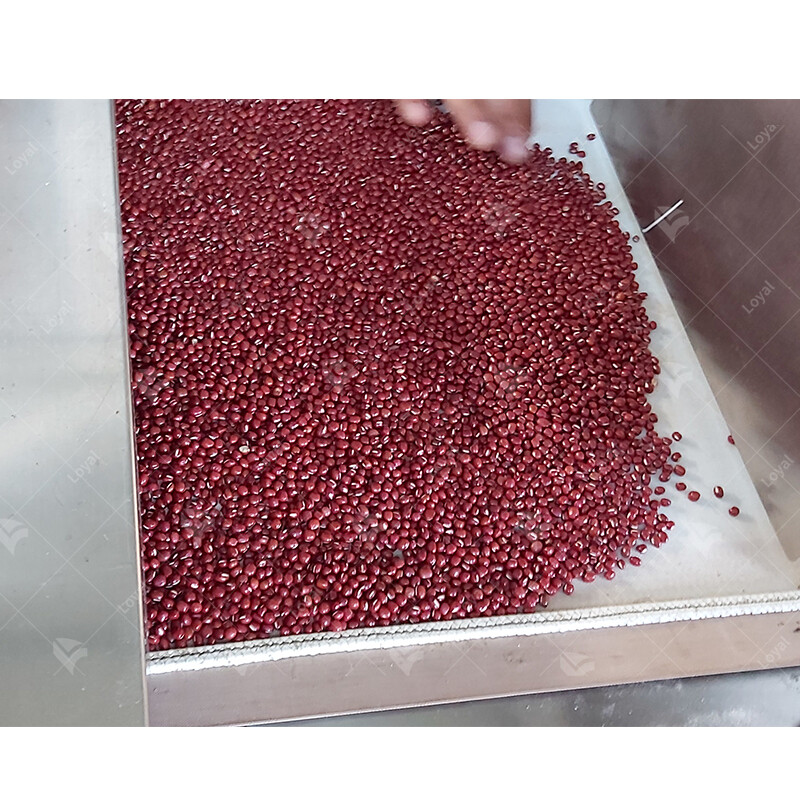
Comparison and advantages of microwave technology and traditional drying methods
Aspect | Microwave Technology | Traditional Drying Methods |
Efficiency | Rapid drying and sterilization process due to direct penetration of microwaves into the product. | Relatively slower drying process requiring longer exposure to heat sources such as sunlight or hot air. |
Energy Consumption | Lower energy consumption as microwaves heat the product directly, reducing overall processing time. | Higher energy consumption, especially in conventional methods like sun drying which rely on natural heat sources. |
Nutritional Retention | Superior retention of nutrients and bioactive compounds due to shorter processing time and lower temperatures. | Higher risk of nutrient degradation and loss due to prolonged exposure to high temperatures in traditional drying methods. |
Preservation of Quality | Preserves natural color, flavor, and aroma of finger millet, resulting in a higher quality end product. | May lead to color deterioration, flavor loss, and aroma changes due to extended exposure to heat and air. |
Uniformity of Drying | Ensures uniform drying and sterilization throughout the product, minimizing the risk of uneven processing. | May result in uneven drying and sterilization, leading to potential quality issues and safety concerns. |
Microbial Safety | Effective microbial reduction through rapid and uniform heating, ensuring higher safety standards. | Limited microbial safety assurance, especially in methods like sun drying which are susceptible to contamination from environmental factors. |
Cost-effectiveness | Initial investment in equipment may be higher, but long-term cost savings due to reduced processing time and energy consumption. | Lower initial investment, but higher operational costs over time due to prolonged processing duration and energy usage. |
Environmental Impact | Reduced environmental footprint due to lower energy consumption and shorter processing time, minimizing greenhouse gas emissions. | Higher environmental impact, particularly in methods relying on fossil fuels or wood for heat generation. |
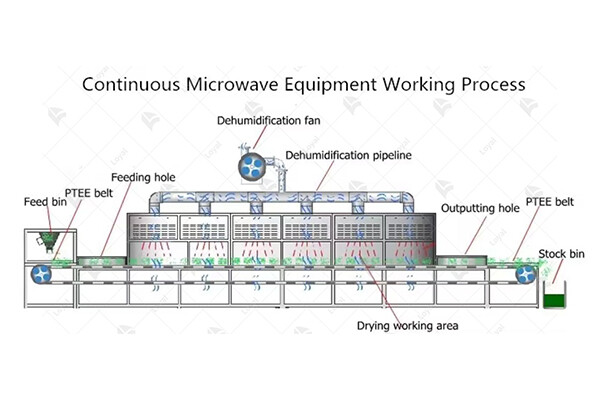
Technical parameters
| Technical Parameters Of Continuous Microwave Dryer Industrial Microwave Drying Machine | |||||
| Model | Size LWH(Can be customized according to the customer's requirements) | Output power | Dewaterability | Sterilization capacity | Baking and Roasting capacity (Depends on different raw material) |
| LY-10KW | 5000mm825mm1750mm | ≥10KW | 10KG/Hour | 100KG/Hour | 30-50KG/Hour |
| LY-20KW | 8000mm825mm1750mm | ≥20KW | 20KG/Hour | 200KG/Hour | 60-100KG/Hour |
| LY-30KW | 8500mm1160mm1750mm | ≥30KW | 30KG/Hour | 300KG/Hour | 90-150 KG/Hour |
| LY-40KW | 10000mm1160mm1750mm | ≥40KW | 40KG/Hour | 40KG/Hour | 120-200KG/Hour |
| LY-50KW | 12500mm1160mm1750mm | ≥50KW | 50KG/Hour | 500KG/Hour | 150-250KG/Hour |
| LY-60KW | 13500mm1450mm1750mm | ≥60KW | 60KG/Hour | 600KG/Hour | 180-300KG/Hour |
| LY-70KW | 13500mm1500mm1750mm | ≥70KW | 70KG/Hour | 700KG/Hour | 210-350KG/Hour |
| LY-80KW | 13500mm1650mm1750mm | ≥80KW | 80KG/Hour | 800KG/Hour | 240-400KG/Hour |
| LY-100KW | 16800mm1650mm1750mm | ≥100KW | 100KG/Hour | 1000KG/Hour | 300-500KG/Hour |
| LY-150KW | 22400mm1850mm1750mm | ≥150KW | 150KG/Hour | 1500KG/Hour | 450-750KG/Hour |
| LY-200KW | 27000mm1850mm1750mm | ≥250KW | 250KG/Hour | 2500KG/Hour | 750-1250/Hour |
| LY-300KW | 32000mm1850mm1750mm | ≥300KW | 300KG/Hour | 3000KG/Hour | 900-1500KG/Hour |
| Power Supply | 380V±10% 50Hz±1% Three-Phase Five-Wire | ||||
| Microwave Output Frequency | 2450±50Mhz | ||||
| Microwave Input Apparent Power | ≤168Kva | ||||
| Microwave Output Power | ≥120Kw | ||||
| Microwave Power Adjustment Range | 0-30Kw(Adjustable) | ||||
| Ambient Temperature | -5-40°C | ||||
| Relative Humidity | ≤80%, Surrounding Environment:No Corrosive Gas, Conductive Dust And Explosive Gas | ||||
| Transmission Speed | 0-10m/Min(Adjustable) | ||||
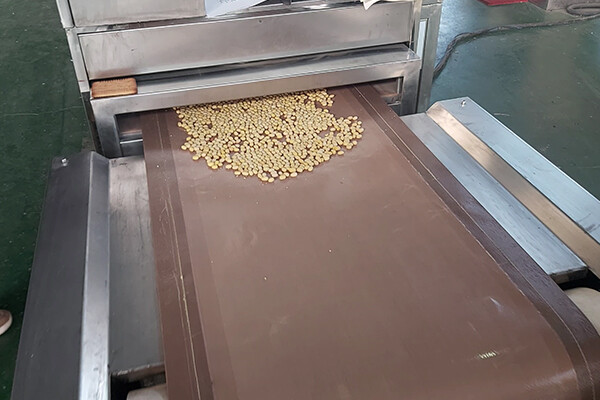
Technological Progress and Innovation of Finger Millet Microwave Drying and Sterilization Machine
In 2024, the finger millet processing industry witnesses a significant leap forward with the advent of advanced microwave drying sterilization machines tailored specifically for finger millet. This article explores the technological progress and innovation surrounding these cutting-edge machines, highlighting their pivotal role in revolutionizing finger millet processing.
Microwave technology has long been recognized for its ability to efficiently dry and sterilize food products while preserving their nutritional integrity. However, the development of finger millet Microwave Drying and Sterilization Machines represents a targeted approach to address the unique characteristics and processing requirements of this nutritious grain.
These innovative machines are equipped with state-of-the-art features designed to optimize the drying and sterilization process for finger millet. Advanced control systems ensure precise regulation of microwave power, temperature, and exposure time, allowing for optimal moisture removal and pathogen elimination while minimizing the risk of over-processing.
Moreover, the integration of intelligent sensors and automation technology enhances the efficiency and reliability of finger millet Microwave Drying and Sterilization Machines. Real-time monitoring and feedback mechanisms enable operators to make data-driven adjustments, ensuring consistent and high-quality output batch after batch.
One of the key advantages of these machines is their versatility and adaptability to varying production scales and processing needs. Whether utilized in small-scale artisanal operations or large-scale industrial facilities, finger millet Microwave Drying and Sterilization Machines offer customizable solutions to meet the demands of diverse stakeholders across the supply chain.
Furthermore, the sustainability credentials of these machines cannot be overlooked. By utilizing microwave energy for drying and sterilization, they reduce reliance on conventional energy sources and minimize the environmental footprint of finger millet processing. This aligns with the broader industry trend towards eco-friendly and resource-efficient practices.
In conclusion, the technological progress and innovation surrounding finger millet Microwave Drying and Sterilization Machines herald a new era of efficiency, quality, and sustainability in the finger millet processing industry. By leveraging advanced microwave technology, stakeholders can unlock unprecedented opportunities for growth, innovation, and market competitiveness in 2024 and beyond.
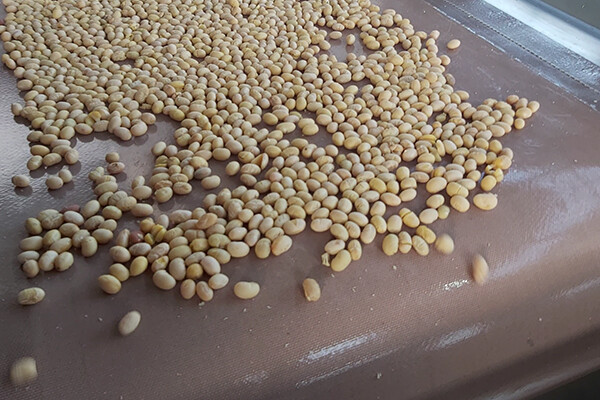
Precautions for Selection and Implementation of Finger Millet Microwave Drying and Sterilization Machine
1. Technical Specifications:
Ensure that the selected machine meets the technical requirements for finger millet processing, including capacity, power, and frequency.
Verify that the machine has the necessary features for both drying and sterilization processes, tailored specifically for finger millet.
2. Quality and Reliability:
Prioritize machines from reputable manufacturers known for producing high-quality and reliable equipment.
Consider factors such as warranty, after-sales service, and customer reviews to gauge the reliability of the machine.
3. Compatibility and Integration:
Assess the compatibility of the machine with existing processing infrastructure and workflow.
Ensure that the machine can seamlessly integrate into the production line without causing disruptions or inefficiencies.
4. Safety Standards:
Verify that the machine complies with industry safety standards and regulations, including electromagnetic radiation safety.
Implement proper safety measures, such as shielding and interlocks, to protect operators and prevent accidents.
5. Training and Support:
Ensure that adequate training is provided to operators for the safe and efficient operation of the machine.
Seek support from the manufacturer or supplier for installation, maintenance, and troubleshooting as needed.
6. Cost Considerations:
Evaluate the total cost of ownership, including initial investment, operational expenses, and potential savings from increased efficiency.
Avoid compromising on quality for the sake of cost savings, as inferior machines may lead to subpar results and higher long-term costs.
7. Testing and Validation:
Conduct thorough testing and validation of the machine before full-scale implementation, including trial runs with finger millet samples.
Monitor performance metrics such as drying time, sterilization effectiveness, and product quality to ensure compliance with standards.
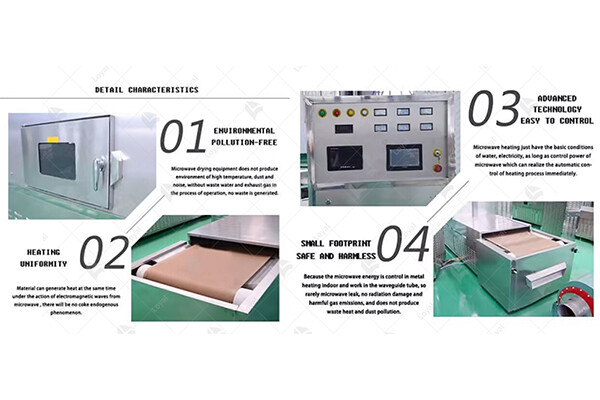
Challenges and Limitations of Finger Millet Microwave Drying and Sterilization Machine
1. Uniformity of Drying and Sterilization: One of the primary challenges encountered with finger millet's finger millet Microwave Drying and Sterilization Machine is achieving uniform drying and sterilization throughout the batch. Despite advancements in technology, variations in moisture content and density of finger millet grains can lead to uneven processing, potentially compromising the quality and safety of the final product.
2. Control of Processing Parameters: Another limitation lies in the control of processing parameters, including microwave power, time, and temperature. While finger millet's machines offer adjustable settings, ensuring optimal conditions for drying and sterilization requires precise calibration and monitoring. Inadequate control over these parameters may result in under- or over-processing, leading to subpar quality or safety concerns.
3. Scalability and Throughput: finger millet's finger millet Microwave Drying and Sterilization Machines may face challenges in scalability and throughput, particularly in high-volume production settings. Limited capacity and processing speed could hinder efficiency and productivity, posing constraints for large-scale commercial operations.
4. Maintenance and Reliability: Like any technological equipment, maintenance and reliability are critical factors affecting the performance of finger millet's machines. Regular upkeep and servicing are essential to ensure consistent operation and prevent downtime. However, availability of technical support and spare parts may vary, potentially impacting the reliability of these machines over time.
5. Cost Considerations: While finger millet's finger millet Microwave Drying and Sterilization Machines offer an innovative solution for processing, cost considerations remain a significant factor for adoption. Initial investment costs, ongoing maintenance expenses, and operational overheads must be weighed against the benefits and efficiencies gained from utilizing these machines.
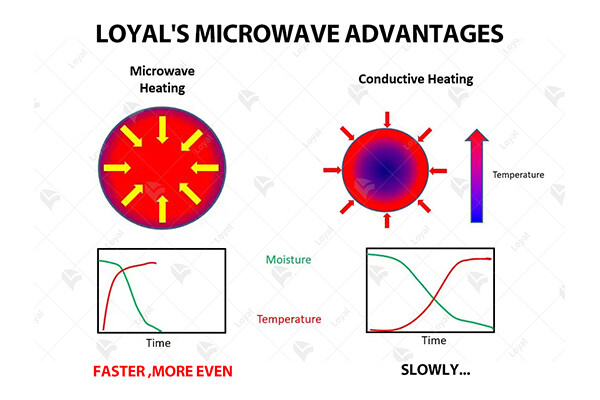
Post-maintenance of Finger Millet Microwave Drying and Sterilization Machine
1. Scheduled Cleaning:
Regular cleaning of the interior and exterior components of the finger millet microwave drying and sterilization machine is essential to prevent the buildup of residues and contaminants. Use mild detergent solutions and non-abrasive cleaning tools to gently wipe down surfaces and remove any debris. Pay particular attention to the microwave chamber, conveyor belts, and ventilation systems.
2. Inspection of Components:
After cleaning, conduct a thorough inspection of all machine components to identify any signs of wear, damage, or malfunction. Check for loose or damaged belts, worn-out seals, and any abnormal noises or vibrations during operation. Addressing these issues promptly can prevent more extensive damage and downtime.
3. Calibration and Adjustment:
Periodically calibrate and adjust the settings of the finger millet microwave drying and sterilization machine to ensure accurate and consistent performance. Verify the temperature, humidity, and microwave power levels according to the manufacturer's specifications. Any deviations should be corrected promptly to maintain the effectiveness of the drying and sterilization process.
4. Lubrication and Greasing:
Proper lubrication of moving parts such as bearings, rollers, and gears is crucial for smooth operation and to prevent premature wear. Use manufacturer-recommended lubricants and follow the prescribed intervals for greasing. Over-lubrication can attract dust and debris, while under-lubrication can lead to increased friction and mechanical failures.
5. Software Updates and Maintenance:
Stay updated with the latest software releases and firmware updates provided by finger millet for the microwave drying and sterilization machine. These updates may include bug fixes, performance enhancements, and new features that can improve overall efficiency and functionality. Regularly check for updates and follow the manufacturer's instructions for installation.
6. Documentation and Record-Keeping:
Maintain comprehensive records of all maintenance activities, including cleaning schedules, inspections, repairs, and software updates. This documentation not only ensures compliance with warranty requirements but also serves as a valuable reference for troubleshooting and future maintenance planning.
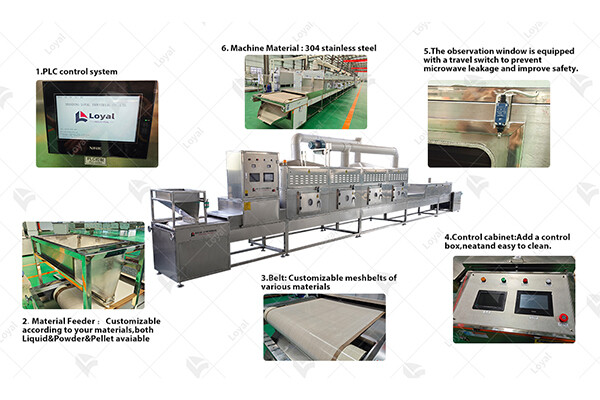
References
The following are five authoritative foreign literature websites in the field of industrial microwaves:
1. IEEE Xplore Digital Library
Website: [https://ieeexplore.ieee.org/]
2.ScienceDirect
Website: [https://www.sciencedirect.com/]
3. SpringerLink
Website: [https://link.springer.com/]
4. Wiley Online Library
Website: [https://onlinelibrary.wiley.com/]
5. PubMed
Website: [https://pubmed.ncbi.nlm.nih.gov/]
 Telephone :+86-531-55583139
Telephone :+86-531-55583139 WhatsApp :+86 13256674591
WhatsApp :+86 13256674591 Email :
Email :










